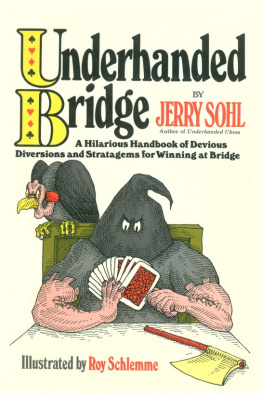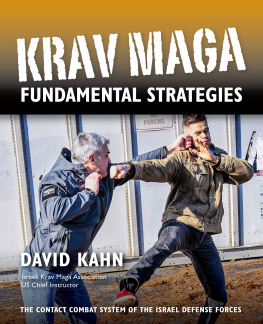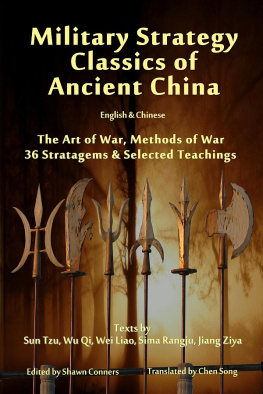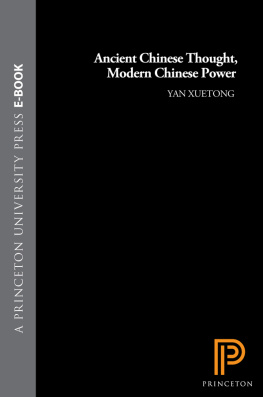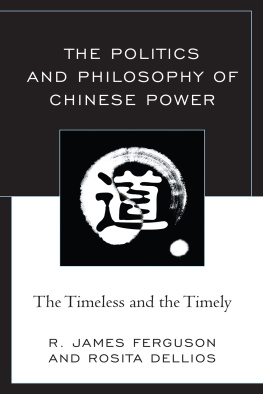THE THIRTY-SIX STRATAGEMS

A MODERN-DAY INTERPRETATION OF A STRATEGY CLASSIC
BY PETER TAYLOR
6. Make a sound in the east, then strike in the west
In any battle the element of surprise can provide an overwhelming advantage. Even when face to face with an enemy, surprise can still be employed by attacking where he least expects it.
The idea here is to get the enemy to focus his forces on one location, and then attack a weakly defended spot. In boxing feinting is a body movement or an incomplete attack used primarily to create a certain reaction from the opponent. The idea is to create an opening or to draw the opponent into responding so you may anticipate and counter with a prepared attack. In order for feints to be successful they must make the opponent believe that a real punch is coming.
In 205 bce Wei Bao, the King of Wei suddenly rose in revolt against Liou Bang despite the fact that he had surrendered earlier. As a result Liou Bang sent his general Han Sin to put down the revolt in Wei.
Wei Bao appointed Bo Jhih as the general of his army and moved his elite troops to Pu Ban, a town on the east bank of the Yellow River to keep Han Sins army under surveillance. Han Sin camped on the west bank of the Yellow River where he assembled hundreds of ships alongside the river in preparation for a river crossing. When night fell torches could be seen all across the west bank and it appeared that Han Sins army was readying to cross the river at any moment.
Seeing this Bo Jhih ordered his troops to guard the west bank of the river and to destroy any ship that tried to cross. However, unknown to Bo Jhih, Han Sin had already sent the bulk of his forces to Sia Yang, a place which was 80 kilometres up the Yellow River. There the army set up a temporary bridge across the river by using empty bottles and barrels and while the Wei army stayed put at Pu Ban for days to defend against a river crossing, Han Sins army had long crossed the Yellow River and had already launched an attack on the capital of Wei. By the time Bo Jhih heard the news it was too late.
In military terms there can be two types of feint. An attack feint is designed to draw defensive forces towards the point under attack. It is usually used as a diversion to force the enemy to concentrate more manpower into a given area, so that the opposing force is then weaker in another area. Second a retreat feint is performed by briefly engaging the enemy, then falsely retreating to a pre-prepared location. It is typically intended to draw the enemy into a prepared ambush.
The Battle of Cannae in 216 bce is a milestone in Roman history as it was perhaps Hannibals finest hour. As Hannibal moved into Italy, without any of his famed elephants, the Roman army put a massive and highly disciplined force into the field against him. Some 50,000 men faced Hannibals troops which numbered less than 40,000 and were a mix of Gauls, Spaniards, Numidians and Carthaginians.
The Roman generals made one huge mistake, they relied on the superiority of their legionaries discipline and ordered them to steadily advance. No use had been made of the superior numbers the Romans had at their disposal other than to simply add more ranks onto the back of the advancing columns. In response the Carthaginian units fought and then feigned a slow collapse in the middle section of the battle lines, thus drawing the Romans into a crescent shaped battle field. This was a planned manoeuvre that then allowed the Romans to be eventually encircled by the enemy.
So just as the Romans believed that they were on the brink of crushing the enemy the Carthaginian flanks were brought to bear and the pressure pinned in the Roman advance. Then the opposing cavalry completed the circle by forcing the rear of the Roman line to turn back and form a square. All around, the massive bulk of the Roman army was forced into confined space. Hannibal then brought in his archers and slingers and the result in the confines was devastating.
In late 2003, Harvard sophomore Mark Zuckerberg asked another student named Eduardo Saverin to deposit $15,000 in a bank account to go towards the servers needed to host a site that Mark wanted to develop. The site would be called thefacebook.com.
Six months after thefacebook.com launched Mark and the third partner, Dustin Moskovitz, moved to California where they planned to work on the site while Eduardo went to New York to set up the company, get funding and make a business model. Almost immediately after this the relationship between the cofounders deteriorated.
When Mark met Sean Parker, an Internet start-up champion best known for cofounding Napster, he was soon invited to join the team and Seans first task was to do one of things Eduardo was supposed to do help the company find money. He quickly proved himself capable using his Napster- gained knowledge of Silicon Valley and this reinforced the idea for Mark that Eduardo was expendable.
So now the problem was how would Mark remove the third-biggest stakeholder and cofounder from the company? In 2004 thefacebook.com was incorporated in Delaware and in September the investor Sean secured, Peter Thiel, formally acquired 9% of the new company with a convertible note worth $500,000. The new company was divided between Zuckerberg with 40%, Saverin with 24%, Moskovitz with 16%, and Thiel with 9%. The balance went to an options pool for future employees, out of which a significant slice of equity went to the new COO, Sean Parker.
In October Eduardo signed a shareholder agreement that secured him 3 million shares of common stock in the new company. In the agreement he handed over all relevant intellectual property and turned over his voting rights to Mark who then became the sole director.
In January 2005 the final step of a plan to remove Eduardo took place when Mark issued 9 million shares of common stock in the new company. He took 3.3 million shares for himself, gave 2 million to Sean Parker and 2 million to Dustin Moskovitz. This share issuance instantly diluted Eduardos stake in the company to below 10%.
And Marks plan had succeeded. Eduardo was, for all intents and purposes, gone.
That said, Eduardo was no loser in the long run since his small initial $15,000 investment is now worth more than $1 billion.
Heres an idea for you
Deceive your rival and show an interest in another person (or product or service) and then, when they react with concern, turn and demand some concession or reward for just staying loyal.
Heres an idea for you
Act as though you no longer have an interest in what you are actually after, convince your opponent that you have given up chasing after this and, when they relax, go for it!
Stratagems for opportunistic situations

If you know the enemy and know yourself you need not
fear the results of a hundred battles
Sun Tzu
7. Create something from nothing
Make somebody believe there was something when there is in fact nothing or simply put, lie.
One method of using this stratagem is to create an illusion of somethings existence, when in fact it does not exist. Another method is to create an illusion that something does not exist, while in fact it does.
The city of Yong Ciou was under siege by Ling Hu Chao, a general of An Lu Shan. The general in charge of defending the city was Jhang Syun. At that time Yong Cious situation was precarious because Jhang Syun did not have enough men or sufficient weapons to defend the city against the siege. Jhang Syun thought of a plan and ordered his men to make 1,000 life-size straw dummies and dress them in black. Against a dim moonlit night the dummies were lowered over the city walls by ropes. When the enemy lookouts saw the dummies, they warned of an immediate attack. The army of Ling Hu Chao showered the straw dummies with hundreds of arrows. Once this assault was over the dummies were hoisted back up into the city and there were enough arrows to replenish the supply for Jhangs defending garrison.
Next page








